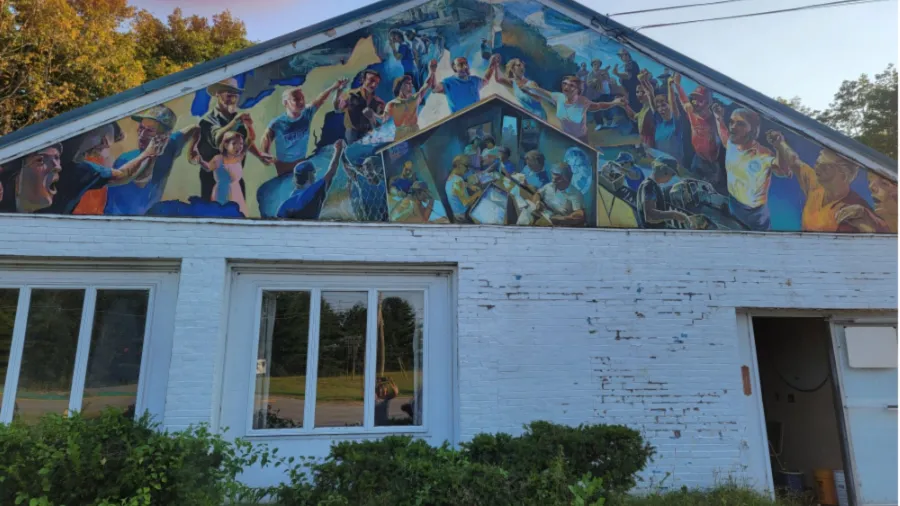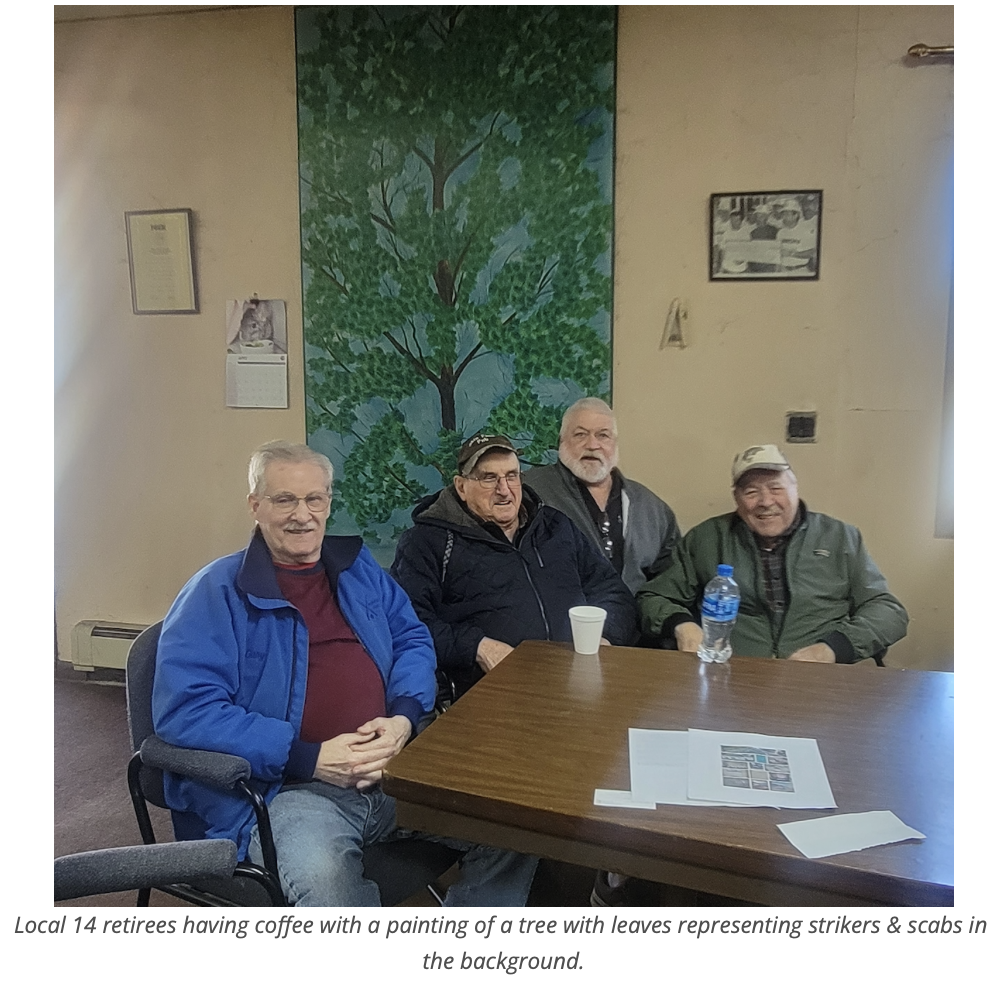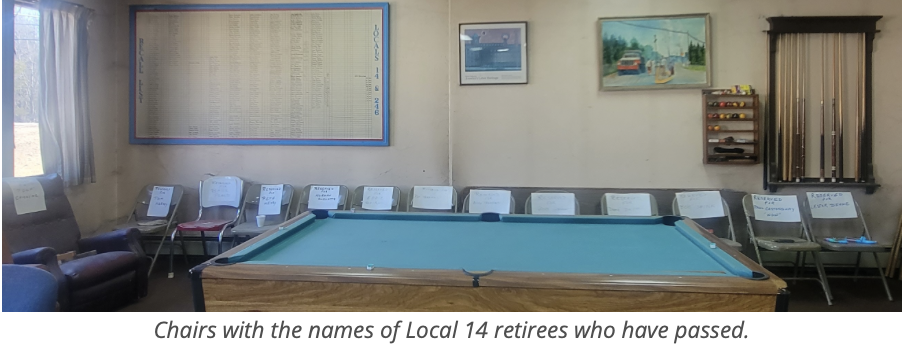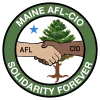Western Maine Labor Council to Purchase Local 14 Union Hall in Jay

The Western Maine Labor Council has approved the purchase of the USW Local 14 union hall in Jay from Local 14 retirees. Once it is purchased, the hall will be the permanent headquarters of the Western Maine Labor Council and a center for labor history and learning. It will be the second building in the state to house a labor council — the first one being the Solidarity Center in Brewer.
The historic Local 14 hall featured prominently in the 1987-88 International Paper Strikeinvolving thousands of United Paperworkers' International Union (UPIU) members across the United States, including 1,200 workers in Jay. The strike ended with the firing and permanent replacement of striking union members. Although the union was decertified, several Local 14 retirees have been congregating at the hall nearly every day for the past 35 years. Several years ago, the retirees purchased the hall from the United Steelworkers after UPIU merged with USW. They have kept paying what they describe as “dues” to keep the hall open.
“They’ve felt so connected to that place,” said Western Maine Labor Council President and Local 14 striker Linda Deane. “I don’t know if it’s because of my connection to the strike, but I just feel a lot of, what I guess you’d call, solidarity when I’m in that building. I just feel like it’s home up there. “

Deane said that the strike still looms large over the community despite the mill permanently closing in March of this year. When Jay residents share memories they often refer to time in terms of “before the strike” and “after the strike.” No one ever forgets the workers who scabbed.
A mural in the union hall painted by the late Jay worker Raymond Henry depicts a tree with leaves representing each worker who stuck together in solidarity during the strike and brown leaves on the ground symbolizing the 100 workers who crossed the picket line. A handful of brown leaves are blowing in the clouds representing the workers who died during the strike, many likely due to stress, according to Deane.

Over the years, their numbers have dwindle and now only a handful of Local 14 retirees keep the morning coffee tradition going. As regulars have passed on, the retirees have placed empty chairs along the back of the hall with the names of their departed union brothers and a personal item on the chair— a pair of pliers, a coffee mug, a bullet, a fishing reel and other tokens of remembrance. A pool table that Jack Getman, author of the excellent book The Betrayal of Local 14, purchased from proceeds from his book, is still in the hall.
Retired Local 14 millwright Bob Roy chuckled when asked why he and his union brothers have kept up the tradition.
“Just out of stubbornness and being a thorn in the company’s side,” said Roy. "I’ve been going there ever since the strike started and I go there just about every day. Now there’s just a few of us left. Probably seven or eight regulars.”
As the retirees have aged, they began to worry about what would happen to the building and all of Local 14’s artifacts when they've passed on. Property taxes in Jay have risen due to the loss of the mill, presenting in additional financial burden for the group. Deane came up with the idea for the labor council to take over the building since labor councils are now exempt from property taxes thanks to a new state law.
“I think it’s great that we’re getting some help to keep the place open. I really do,” said Roy. “To me, there’s a lot of history. It’s about telling younger generations, ‘don’t let big companies push you around.’ We didn’t win, but they lost a lot."
Under the new arrangement, the retirees will still be able to meet for their morning coffee and WMLC will have a more centralized location for union members to meet in the three western Maine counties it represents. The Charles A. Scontras Center for Labor & Community Education at the University of Southern Maine also sees a potential role for the building in hosting organizing trainings, labor history events and other educational programming.
"Even though we are centered in Southern Maine we are also a statewide organization and we are very much looking forward to working with working people all over the state of Maine,” said Matthew Emmick, Executive Director of the Scontras Center. “Having a center in Jay is a perfect way of examining what's happening in Maine through the cultural context of the Jay paper workers, the strike and other worker struggles to see what we can learn from that history and how it can be applied today. That living memorial is just a great space to do that.”
Author and union organizer Peter Kellman, who helped organize the Jay strike, said he is very pleased with the purchase of the union hall, especially because it means the Local 14 mural on the outside of the building will be preserved. He noted that the hall was open 24 hours a day during the strike, except when unqualified scabs caused a chlorine dioxide leak at the mill.
The Jay-Livermore Falls Working Class History Project also conducted interviews with Jay strikers at the hall for the book “Pain on Their Faces: Testimonies on the Paper Mill Strike.” Long after the strike was over Kellman said former Jay strikers who had to find work at other mills and shipyards across the state would come home to Jay on the weekends and report what was happening at other manufacturers. It was the place to go to learn everything that was going on at all the other mills in Maine.
“That hall is amazing place,” said Kellman. “There was such solidarity, friendships and work that came out of it.”

The Jay Strike Mural by Andrea Kantrowitz is composed of a series of panels mounted on the gable end of the Local 14 Union in Jay, Maine. It features the real people involved in the strike & the events that occurred there from the start of the strike on June 16, 1987 to its end on October 9, 1988.
